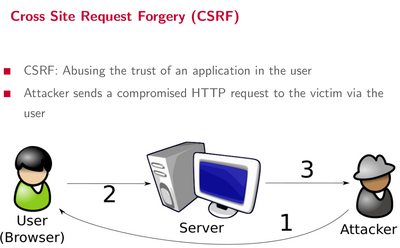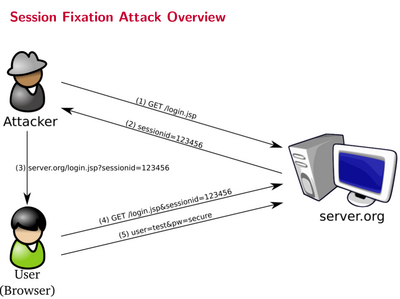TU Wien:Advanced Security for Systems Engineering VU (Fankhauser)/WS13-14, 3. Test vom 10.04.2014 - Ausarbeitung
Zur Navigation springen
Zur Suche springen
Angabe: TU_Wien:Advanced_Security_for_Systems_Engineering_VU_(Fankhauser)/WS13-14,_3._Test_vom_10.04.2014
- MC: Was ist mit Path Traversal alles möglich? [Angabe nicht vollständig]
- Allows unauthorized access to files and programs on OS level
- Attackers are using this to navigate through directories and to collect information
- Command Injection
- MC: Kann man Path Traversal mit Command Injection kombinieren? [yes] (bin mir unsicher)
- MC: Was kann man durch Input Sanitizing alles verhindern? [ Path Traversal and XSS ]
- MC: Was kann ist mit XML attacks alles möglich? [ Code Execution and DoS ]
- Mehrere User teilen sich ein XML Dokument, aber jeder soll nur auf Teile davon Zugriff haben - wie kann man das mittels XML Encryption realisieren?
- Describe the two types of XML encryption. (gemeint war glaube ich enveloping/detached)
- MC: Which parts of XML signatures are mandatory? [ Object | KeyInfo | SignedInfo | SignatureValue? ]
- List 3 security features of the Austrian ePass.
- BAC - basic access control
- PA - passive authentication
- AA - active authentication
- EAC - extended access control
- Which two protocols does the Austrian ePass use?
- TA - terminal authentication
- CA - chip authentication
- Which data is the derived BAC key of the ePass based on?
- document number
- birth date
- validity date
- List and describe two measures for preventing SPIT other than simple black/whitelisting.
- Describe how an INVITE flooding attack works in SIP and the consequences.
- Describe two ways of how a SIP cancel attack can work and its consequences.
- MC: What is the value of (x XOR y XOR x). x and y were two numbers in binary representation. [ 3 different binary numbers | not possible ]
- MC: Does ASLR provide sufficient entropy on 32 bit systems to protect against brute forcing? [ no ]
- Padding oracle: Verwirrend, Angabe war ca so: Angreifer hat bereits die letzten bytes der ersten beiden Blöcke eines CCB verschlüsselten Ciphertexts geknackt. Gegeben war also C0[15] und C1[15] (also das 16. byte des ersten respektive zweiten Blocks, in Binärdarstellung). Weiters waren gegeben die entsprechenden Plaintext-bytes M0[15] und M1[15]. Wie müsste man C'0[15] und C'1[15] wählen, um ein gültiges Padding (das Padding sollte 0b00000010 sein) zu erhalten. Dazu war noch eine Grafik gegeben wie so eine CBC aussieht.
- Describe 2 goals of Anti-Skimming measures.
- Irgendwas mit XML und authenticity, glaube da gings um MACs.
- MC: Irgendwas zu Authenticated Handshake, ob es gegen MITM schützt oder so ähnlich.
- MC: Android master key exploit, warum funktioniert er?
- MC: Baseband fuzzing, was wird dadurch attackiert?
- MC: Zu GSM traffic encryption, diverse Aussagen zu A5/x

